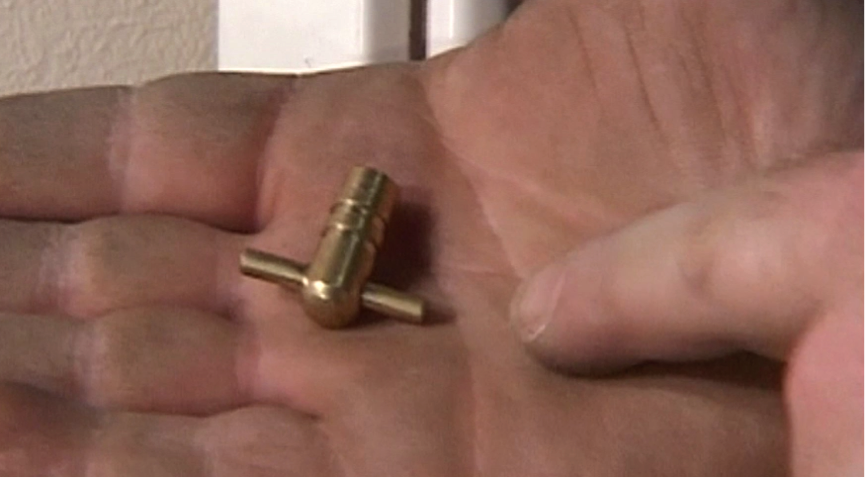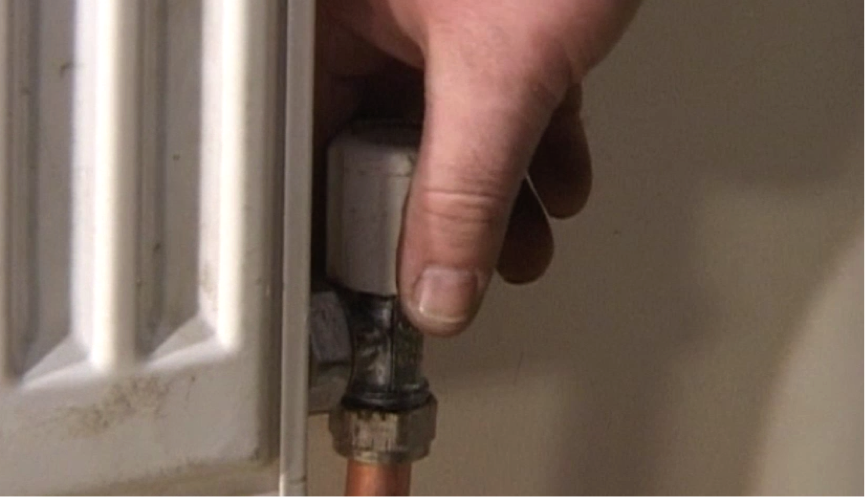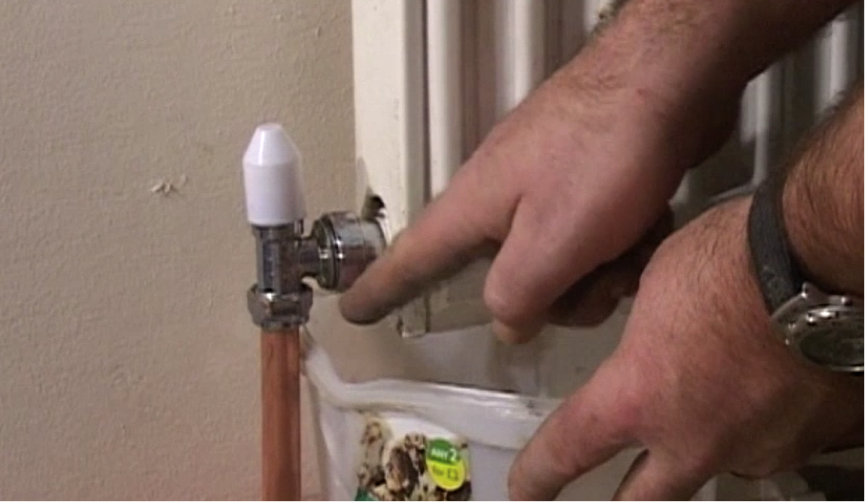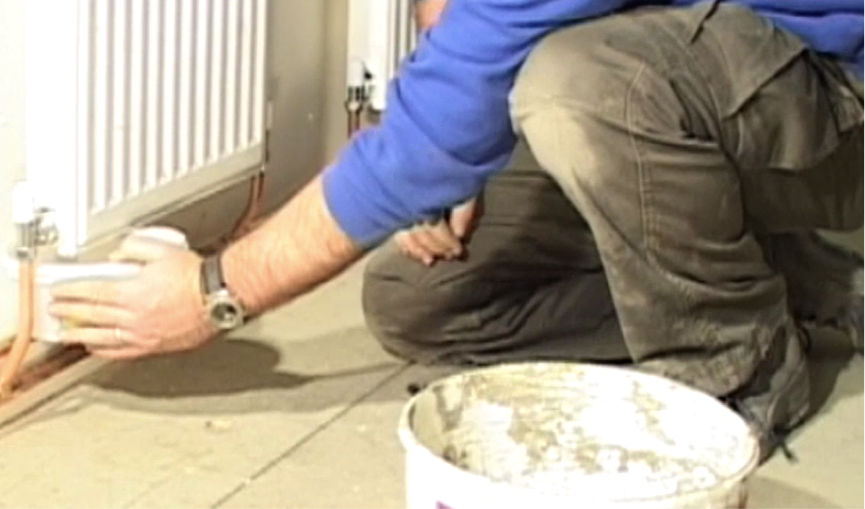Radiator systems can have trapped air or the water may need changing every now and then. So, it’s a useful skill to be able to bleed them. Here’s our guide on how to do it, isolating the radiator from the system for maximum safety.
Step 1. Use your radiator bleed key
Always use your radiator bleed key to remove air from the radiator system. It should only require a small turn of the valve.
Step 2. Isolate radiator
Close the valve, then use the flat head of the cap to close the other valve on the other side. Then put the caps back in their original positions. The radiator is now isolated from the rest of the system. The rest of the heating system should still be working and full of water. But once your valves are closed, no more water can get in to the radiator.
Step 3. Crack the nut
Place your small tub beneath the valve and crack the nut. The radiator will start to dribble water. To speed the process up, open the bleed valve allowing air into the radiator. You can control the water flow by loosening and tightening the nut with your fingers.
Step 4. Drain the water
Draining the water slowly is a good idea as you have more control. Let water fill the small tub then empty into your bucket. It may also be a good idea to put towels around your radiator to catch any excess water and protect your floor, as the water coming out of the radiator may be dirty.



